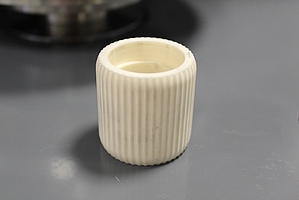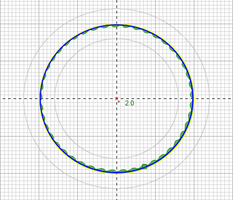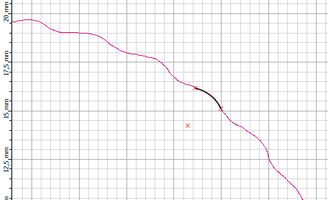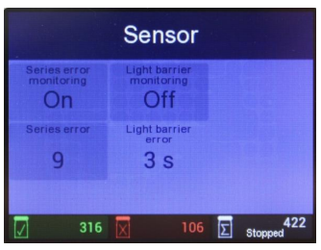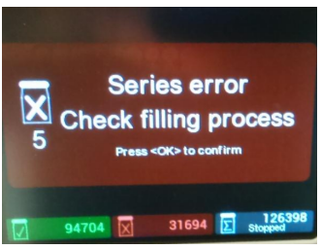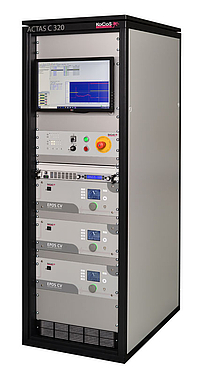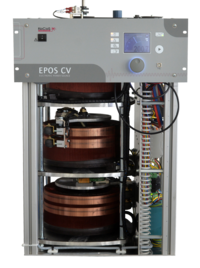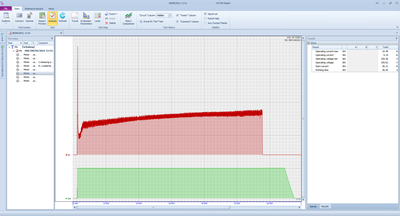Background
Germany wants to do more for the climate. Following the ruling of the Federal Constitutional Court in March 2021, the German government announced that CO2 emissions are to be reduced by 65% by 2030 compared to 1990 levels and not - as previously planned - by 55%. This basically requires more electrical energy from renewable sources than previously planned.
Depending on how high the demand for electrical energy is estimated to be in 2030, there will be completely different orders of magnitude in which wind and solar power plants will have to be expanded in order to achieve this 65% target.
How will the future energy demand in Germany develop?
So far, the Federal Ministry of Economics and Technology (BMWi) has assumed that electricity consumption will not change significantly over the next nine years until 2030 and will remain at around 580 billion kWh. Looking at the past, this does not seem wrong. "In the last ten, 20 years, electricity consumption has been relatively constant," Johannes Wagner of the Energy Economics Institute at the University of Cologne (EWI) told Deutsche Welle. "We had a gross electricity consumption of about 600 billion kWh over a long period of time. That only went down relatively sharply in 2020 due to special effects from Corona."
But that need not hold true for the future. Various experts believe that the federal government's planning to date is too cautious. Even SPD chancellor candidate Olaf Scholz recently indirectly criticised his ministerial colleague Peter Altmaier (CDU): "Anyone who claims that electricity consumption will remain the same until 2030 is lying to himself and the country."
So what if electricity consumption does not stay the same at all, but perhaps even rises sharply? That is in fact the scenario that various energy experts are assuming. "The expert commission for monitoring the energy transition, of which I am a member, has estimated a value for electricity consumption that is significantly higher than that of the German government," says Veronika Grimm, a member of the government's Council of Experts (the “Wirtschaftsweisen"). "We are moving around a value of 650 billion kWh and are thus still at the lower end of the spectrum," Grimm said in an interview with Deutsche Welle in July 2021.
Energy demand in the first half of 2021
According to Zeit Online, more energy was needed and more CO2 was emitted in the first half of 2021 than in the same period of the previous year with approx. 600 billion kWh. The share of fossil fuels increased compared to the previous year.
A rather cool winter (2020/2021) and the restart of the economy after the Corona slowdown caused energy demand in Germany to rise in the first half of 2021. According to calculations by the Working Group on Energy Balances (AGEB), consumption increased by 4.3% compared to the same period last year, to approx. 625 billion kWh.
Because more electricity was produced with brown and hard coal than in the same period last year, carbon dioxide emissions increased by 6.2%. The consumption of lignite rose by about one third in the first six months of this current year, that of anthracite by almost 23%. The increase in fossil fuels in electricity generation is mainly due to the fact that less wind power was generated.
Estimates of Germany's future electrical energy demand
On 13 July 2021, Federal Minister of Economics and Technology Peter Altmaier presented a first new estimate of Germany's electrical energy demand in 2030.
In the BMWi press release of 13 July 2021, Federal Minister of Economics Peter Altmaier states here, among other things: "The new version of the Climate Protection Act and our new ambitious climate targets, which the Bundestag and Bundesrat passed at the end of June 2021, require an adjustment of our analyses of electricity consumption in 2030."
Today it is already clear that Germany's future energy supply will essentially be based on two energy sources. On the one hand, on electricity from renewable energies and, on the other, on hydrogen produced with the help of renewable energies.
An initial estimate of electricity consumption in 2030, prepared by Prognos AG on behalf of the Federal Ministry of Economics, comes to an electricity consumption of between 645 and 665 billion kWh. The following assumptions were made: 14 million electric cars, 6 million heat pumps and 30 billion kWh of electricity for green hydrogen.
According to the German Wave, the think tank Agora Energiewende also estimates the electrical energy demand in 2030 at 650 billion kWh. The EWI calculates that 685 billion kWh will be needed in nine years. The German Renewable Energy Federation (BEE) assumes 745 billion kWh in 2030 and the Fraunhofer Institute for Solar Energy Systems (ISE) even expects an energy demand of 780 billion kWh in 2030, i.e. 70 to 200 billion kWh more than the Ministry of Economics currently forecasts.
Higher energy demand due to e-cars, heat pumps and electrolysers.
The demand for energy is growing due to the shift to e-mobility and the changing heating of buildings (e.g. with electrically powered heat pumps). It is also becoming apparent that industry will have to switch to synthetic energy sources, such as hydrogen. For the production of green hydrogen through electrolysis, there is in turn an increased demand for electrical energy.
"The German government's goal of creating electrolysis capacities of five gigawatts by 2030 alone will require a considerable amount of additional electricity. To achieve this, we need to estimate an additional 20 billion kWh of electricity," says Veronika Grimm. This energy demand corresponds to more than one sixth of the total energy provided by wind power in 2020.
So more electricity will be consumed. On the other hand, there are of course efficiency gains that reduce electricity consumption. In this area, the German government has set itself the goal of reducing electricity consumption by 25% by 2050 compared to 2008 through greater energy efficiency. However, these efficiency gains cannot compensate for the increased demand for electrical energy.
In addition, Agora Energiewende criticises that economically highly profitable efficiency potentials have not yet been systematically exploited, even though market-ready technologies are already available today.
How large must the growth of renewable energies be?
Based on the electricity estimates of Agora Energiewende, Germany would have to expand about ten gigawatts of photovoltaics, 1.7 gigawatts of onshore wind and four to five gigawatts of offshore wind annually by 2030. In recent years, these outputs were only achieved in the record expansion years.
It will probably not work without its European neighbours. "Currently, Germany exports electricity abroad," says Johannes Wagner (EWI), "in the medium term, we must expect Germany to become a net importer for the time being."
It will be quite challenging and many mechanisms will have to be set in motion to push the expansion of renewable energies, says expert Veronika Grimm.
Sources:
Deutsche Welle, ZEIT ONLINE, dpa, BDEW, Statista, BMWi, AGEB, ZSW, ISE, Agora Energiewende, EWI



